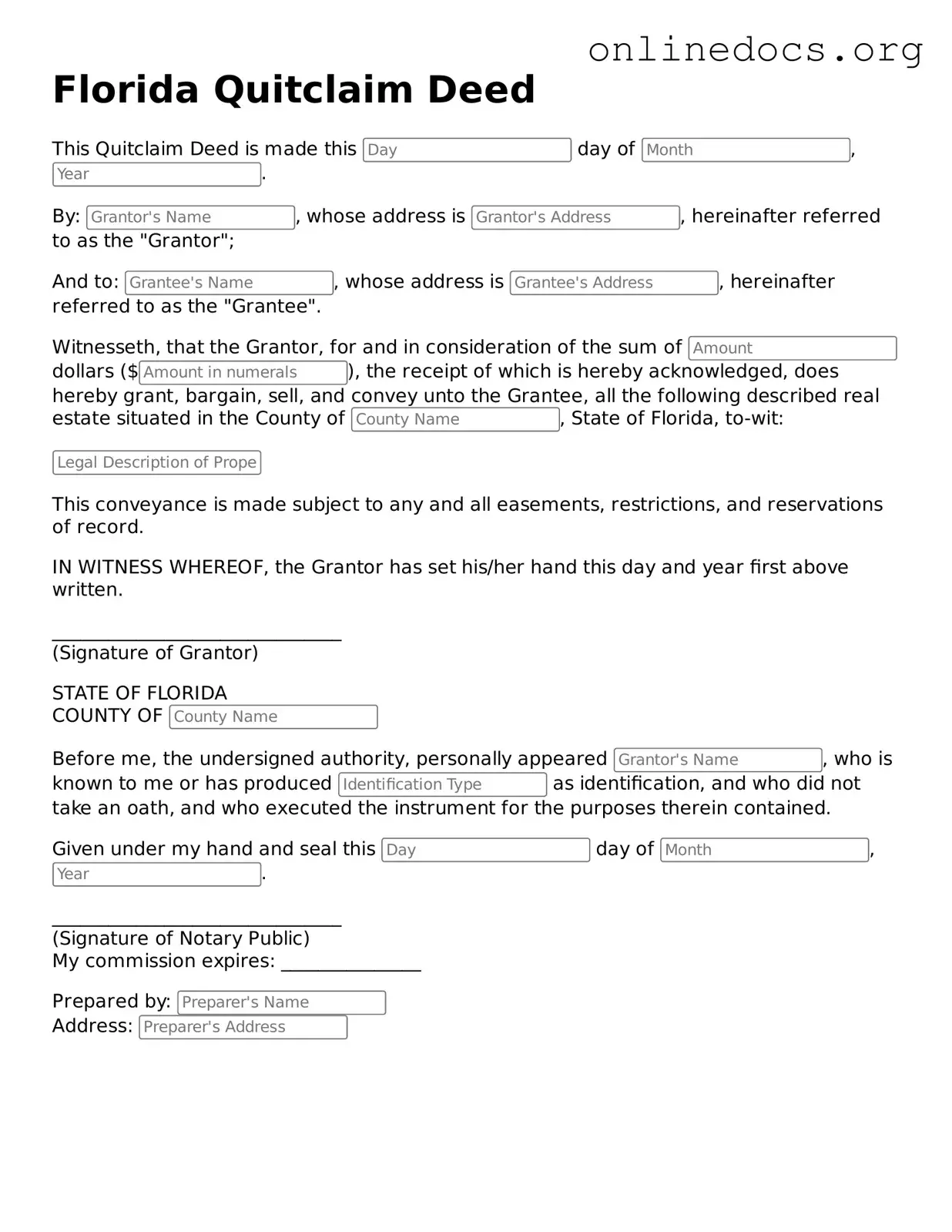The Florida Quitclaim Deed is similar to the Florida Deed form in that both documents are used to transfer ownership of real property. However, a Quitclaim Deed offers no guarantees about the title. It simply transfers whatever interest the grantor has in the property, if any. This type of deed is often used in situations where the parties know each other, such as transferring property between family members or during a divorce. While it is a straightforward document, it lacks the protections that come with other deed types, making it essential to understand the implications of using a Quitclaim Deed.
The Warranty Deed is another document akin to the Florida Deed form. Unlike the Quitclaim Deed, a Warranty Deed provides a guarantee that the grantor holds clear title to the property and has the right to sell it. This means that if any issues arise regarding ownership or claims against the property, the grantor is responsible for addressing those issues. Buyers often prefer Warranty Deeds for this reason, as they offer more security and assurance about the property's legal standing.
Understanding the different types of deeds is essential for anyone involved in real estate transactions. For landlords and tenants, the California Notice to Quit form is particularly significant as it outlines the legal framework for addressing lease violations or non-payment issues. To learn more about this form and how to properly fill it out, visit https://californiapdfforms.com/notice-to-quit-form.
The Special Warranty Deed shares similarities with the Florida Deed form, but it comes with a specific limitation. This type of deed guarantees that the grantor has not caused any title issues during their ownership of the property. However, it does not cover any claims or issues that may have existed before the grantor took ownership. This makes the Special Warranty Deed a middle ground between the Quitclaim and Warranty Deeds, offering some level of protection while still being simpler than a full Warranty Deed.
The Bargain and Sale Deed is another document related to the Florida Deed form. This deed implies that the grantor has title to the property but does not provide any warranties against defects. It is often used in real estate transactions where the seller may not want to make any guarantees about the property’s condition or title. Buyers should approach this type of deed with caution, as it does not offer the same protections as a Warranty Deed.
Lastly, the Grant Deed is similar to the Florida Deed form in that it is used to transfer property ownership. A Grant Deed typically includes certain warranties, such as the assurance that the property has not been sold to anyone else and that it is free from any undisclosed encumbrances. While it offers more protection than a Quitclaim Deed, it may not provide the full level of security found in a Warranty Deed. Understanding these distinctions can help individuals choose the right type of deed for their specific needs.
